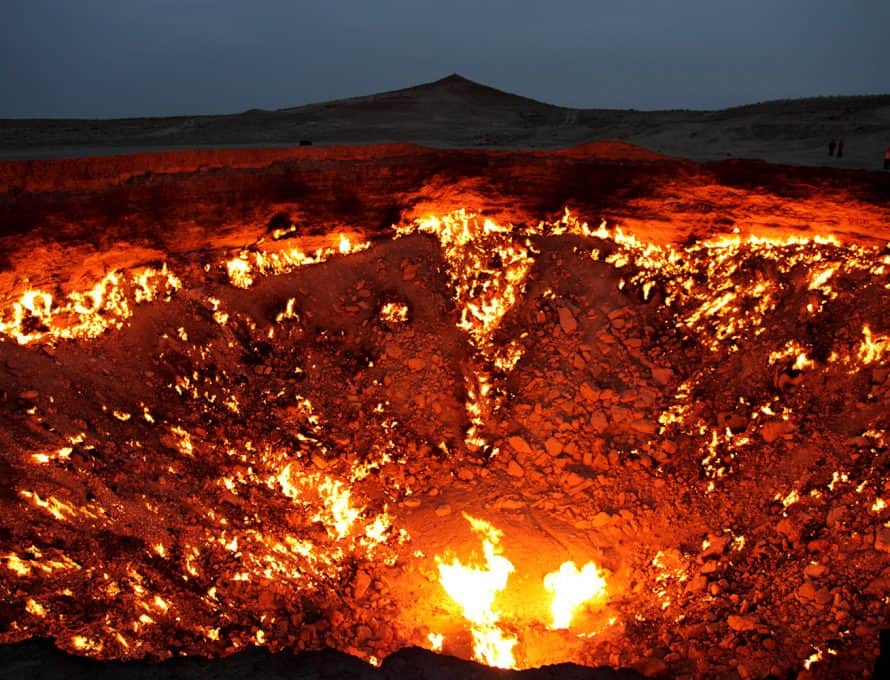This is the third in a series of articles on biblical terms that describe the afterlife and the unseen world.
Hades is a Greek god whose name means “The Unseen.” He is depicted as lord of the underworld, the abode of the dead. So it should come as no surprise that Jesus and the New Testament writers borrow from this familiar term to describe the realm of departed spirits.
What’s more, they cut through the mythology to present an accurate picture of the afterlife.
The word Hades appears 10 times in the New Testament, forming a linguistic bridge that takes us from the Old Testament view of life beyond the grave (in Sheol) to the New Testament position.
In coming to a biblically faithful understanding of Hades, it’s important to state what the word does not mean.
Hades does not mean death, because the Greek word Thanatos is used for death in the New Testament. Further, death (Thanatos) and Hades appear together in Rev. 1:18, so they cannot mean the same thing.
Second, it cannot mean grave, because the Greek work Mneema depicts the place where the bodies of the deceased are buried.
Third, it cannot mean hell, the place of final punishment for the wicked, because the Greek word Gehenna is used for hell in the New Testament. Further, Hades is cast into the lake of fire in Rev. 20:14.
Fourth, Hades is not the intermediate state of Christians between death and resurrection, because the Greek word Ouranos depicts heaven.
Progressive revelation
While Hades is consistently used in the Septuagint as the Greek equivalent of the Hebrew term Sheol, this does not mean Hades should be limited to the Old Testament understanding of the afterlife.
As we move through the Bible, God reveals more truths so that His revelation in Scripture may be described as progressive.
Put another way, the New Testament picks up where the Old Testament leaves off by further developing our understanding of what happens to the soul after death.
During the period between the Old and New Testaments, the Jewish concept of Sheol progressed to the point where it was believed that Sheol had two distinct compartments: Torment, and Abraham’s bosom or paradise.
This rabbinic understanding of Sheol is the basis of Jesus’ story of Lazarus and the rich man (Luke 16:19-31). The rich man dies and finds himself in Torment in Hades. Angels, on the other hand, carry Lazarus to Abraham’s bosom, presumably the other compartment of Hades.
The conversation between Abraham and the rich man, the description of the rich man’s consciousness and suffering, and the impassable gulf between the two compartments provide further details about Hades that build on the Old Testament understanding of life beyond the grave.
Context and Hades
Nevertheless, we should acknowledge that Hades is a somewhat flexible term whose precise meaning depends on context. Consider:
In Matthew 11:23-24 and Luke 10:15, Jesus uses Hades to depict the destruction of Capernaum.
In Matthew 16:18, Jesus assures His followers that the shadowy afterlife (Hades) cannot overpower His church because He has come to conquer sin and death.
In Luke 16:19-31, Jesus describes the torment suffered by the rich man in Hades, where a great chasm separates him from Lazarus and Abraham.
In Acts 2:27-31, Peter quotes from Psalm 16:8-11 to make it clear that Jesus, unlike David, did not remain among the dead in Hades but rose from the dead without His flesh suffering corruption.
In Revelation 1:18, Jesus holds the keys of death and Hades, meaning He has authority over death and its consequences.
Finally, in Revelation 20:13-14, Death and Hades are personified as giving up their dead, then they are thrown into the lake of fire. There is no more physical death, and no more temporary abode of the wicked dead in Hades.
Absent from the body
Some New Testament commentators believe Jesus escorted the Old Testament saints from Hades into heaven between His death and resurrection, citing Eph. 4:8-9 and 1 Peter 3:18-22. Others dispute this, arguing that the Old Testament saints entered heaven immediately after death.
In any case, the New Testament describes believers after Christ’s resurrection as entering heaven directly upon death (Phil. 1:23). There, they are present with the Lord (2 Cor. 5:6-8), worshiping with the angelic hosts of heaven (Heb. 12:22-23) and the martyred saints at the altar of God (Rev. 6:9-11).
Meanwhile, the souls of deceased unbelievers continue to populate Hades, awaiting resurrection and final judgment, at which time they stand before the great white throne and are cast into Gehenna, which is the subject of the next column.
Next: Gehenna and the afterlife.

